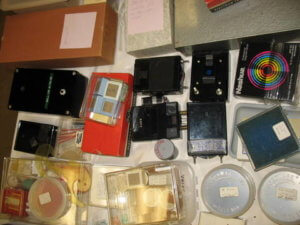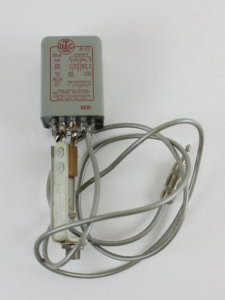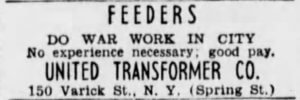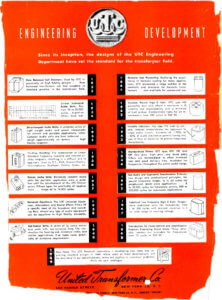An unassuming catalog entry leads to an archival treasure hunt for more information
Most of the things in the Sarnoff Collection were made by RCA, but we also have a lot of material in our storage space that came from researchers at RCA Labs. Sometimes, it even feels like some of our material is just the result of a former researcher emptying out the contents of his or her lab drawer into a box, and that box then came to us devoid of much context, but full of interesting items. One of these assortments came to the Sarnoff Collection as accession number S.496, which was cataloged as “Collection of LED Components,” but S.496 was full of so much more than LED components.

As part of our conservation and preservation efforts, we are going through the whole collection to make sure that all of our artifacts are stored in a way that will protect and preserve them for generations to come, and while we are doing that, we are also giving collections like S.496 more detailed information. So, for the next few weeks, we will be investigating these objects, starting with this transformer.

At their most basic, transformers are devices that can either increase or decrease the voltage in an electric system (learn more about how they work here), and are central to our modern use of alternating current (AC) electrical power. The principles behind how these devices work date back to the 1820s, when Danish physicist Hans Christian Oersted discovered the principle of electromagnetism– that there was a direct relationship between electricity and magnetism. This discovery led to a flurry of experiments to uncover other electromagnetic phenomena, including ones performed by Micheal Faraday in 1831. He discovered that when he passed an electric current through a wire wrapped around an iron ring, that induced a current in a nearby wire wound around the same iron ring. This phenomenon, which Faraday called electromagnetic induction, is what is at work in a transformer.

Faraday, however, did not invent the transformer. In his experiments, he used the same number of turns of wire on the iron ring in both the primary and secondary coils, thus the voltage remains the same. It was left to other researchers to realize that if the primary coil had more turns relative to the secondary coil, then the resulting induced electromotive force would be proportionally larger, and vice versa. Also, in the 1870s, efficient generators that produced alternating current became more widely available. That, coupled with the transformer, was the innovation that led to the electrification of the modern world. A transformer allows power to be transmitted through power lines at a high voltage (which reduces the energy lost as heat from resistance in the wire, and increases the efficiency), and then transformed to to a lower voltage to make it safer for use. Transformers made large-scale electrification possible, but they also became indispensable for a variety of electronic applications.
The United Transformer Corporation (UTC) was one of the many electronics companies that sprang up in the twentieth century to cater to the growing market of electronic components. It was founded in 1932 by Samuel Baraf, soon after he graduated from the City College of New York. Over the next thirty years, it spread from its headquarters on 72 Spring Street to larger premises on 150 Varick Street in 1939. It was one of many electronics companies that flourished in the heyday of the electronic age, and it grew especially quickly during World War II, where it provided much-needed components to the US military. After the war, they built plants in Garden City, NY, and Culver City, CA

UTC built a variety of electronic components, but early on, they began to specialize in smaller components, especially smaller transformers. In 1937, they unveiled the UTC Ouncer, a high-fidelity transformer that weighed only an ounce, followed by the Sub-Ouncers in 1940. Along with transformers, UTC produced other microminiature magnetic components, toroidal coils, electric wave filters, and (under the brand name Maximus), even a series of high fidelity speakers.

In May, 1966, UTC’s owner, Samuel Baraf reached an agreement with the Metuchen, NJ based company Gulton to acquire UTC’s stock, but the agreement fell through in June. In July, UTC reached an agreement with TRW, a Cleveland-based firm, to buy UTC’s assets. UTC continued to operate well into the 1970s as a TRW division, and Baraf remained as the general manager for UTC until his retirement in 1968.

The particular transformers we have in the Sarnoff Collection date to just before UTC was acquired by TRW. It was part of the UTC ultra-compact line, and was first introduced in 1962. The two transformers we have in the collection were soldered into a mounting unit, but we don’t know what they were used for, or even how they came to be in the collection. Still, they serve as a reminder for our electronic past.


